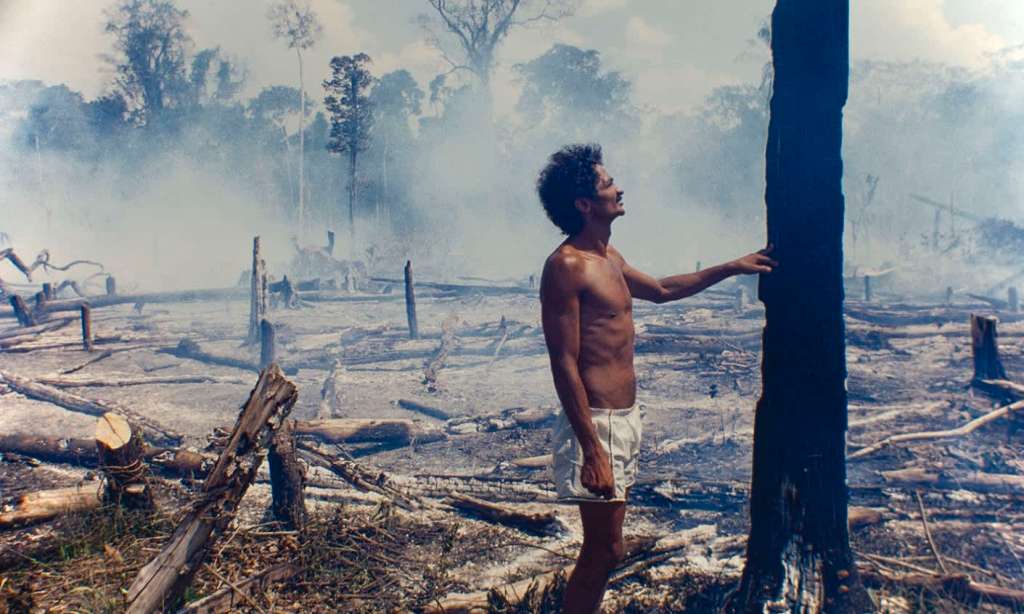In the latest entry into the never-ending series of ‘we’ve utterly kooked it‘ and ‘nature hates us‘ is the news that the Amazon rainforest, Earth’s largest tropical forest also known as the ‘lungs of the planet’, is now emitting carbon dioxide.
Typically, trees and forests are incredible natural storages of carbon dioxide. Unlike animals, they ‘breathe’ in carbon dioxide and ‘breathe’ out oxygen, making them carbon ‘sinks’ rather than carbon ‘sources’.
However, deforestation and climate change are altering the Amazon rainforest’s ability to soak up carbon, according to a new study.
Now, significant parts of the Amazon region have started to emit more CO2 than they absorb, making the Amazon a carbon source.
This is due largely to deforestation of the region and emissions from the fires used to clear land for cattle grazing and agriculture. It’s fair to say that Brazil has been going at the Amazon like it’s trying to raise an army of Uruk-Hai to lay siege to Helms Deep.
Beef and soy are the biggest culprits here, as farmers grow food to export around the world. The southeast is worst-affected, say scientists, with higher rates of tree loss and an increasing number of fires. Temperatures in that part of the region have risen by three times the global average during the hottest months.
Lead author Luciana Gatti said the research showed how humans are “promoting changes in the dry season conditions and stress to trees that will produce even more emissions”.
“This is terrible negative feedback that increases the emissions much more than we knew”.
The researchers are worried that the changing climate is also interfering with rainfall, which they argue, has immediate consequences for Brazil.
“This is very bad news for everybody but mainly for Brazil,” said Dr Gatti. “We have lots of problems with lack of precipitation, such as electricity from hydropower becoming more expensive. There are also heavy losses in agriculture.”
“We need to link this with Amazon deforestation and change the behaviour.”
On-trend
In recent years, a growing number of studies have suggested that the Amazon region’s ability to remove carbon from the air and store it has been weakening.
A 30-year study, published in the journal Nature in 2015, found that the Amazon’s ability to absorb carbon dioxide is showing “a long-term decreasing trend of carbon accumulation,” in part because of greater climate variability and earlier deaths of trees.
A 2018 essay in the journal Science Advances warned that the combination of deforestation, climate change, and burning are turning parts of the rainforest into a desert.
“The precious Amazon is teetering on the edge of functional destruction and, with it, so are we,” the authors wrote. “We stand exactly in a moment of destiny: The tipping point is here, it is now”.
Is there any hope?
Silver linings from a 2020 study that predicted that the Amazon would become a carbon source in the next 15 years, said that areas of the rainforest that were protected were still able to function effectively as carbon sinks.
The Menkragnotí Indigenous Territory in Brazil, for example, continues to absorb emissions equal to the output of two million cars every year — even though surrounding areas have turned into carbon sources.
Researchers for the current study also found that protected and less impacted areas of the rainforest emitted far less carbon than deforested areas.
“In the eastern part of the Amazon, which is around 30% deforested, this region emitted 10 times more carbon than in the west, which is around 11% deforested,” said Gatti.
However, there are efforts underway to block an EU trade deal with Brazil unless it agrees to do more to protect the Amazon. EU countries and officials were in uproar last year as the Amazon experienced the worst fires it has ever seen
No such pressure is currently being exerted on Australia in its dealings with Brazil, however.
On an individual level, being conscious of what you eat and where it comes from could have a big impact on the agricultural practices of Brazil.
In an interview with The New York Times, Dr Gatti said that her research has led her to stop eating beef.
“Would you like to have the Amazon removed for your lunch?” she said.
Read more stories from The Latch and subscribe to our email newsletter.

